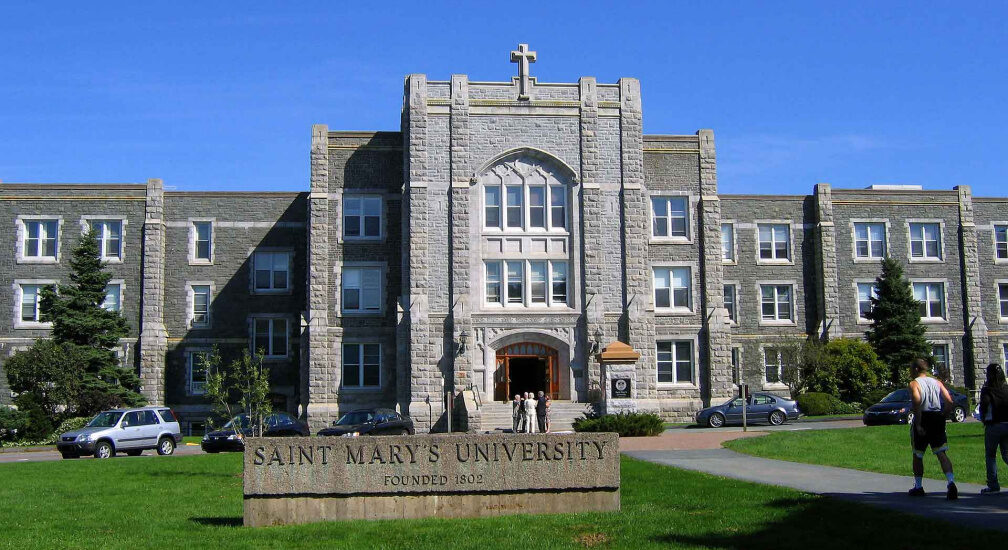
This article was originally published in the Journal, St. Mary’s University’s independent student publication.
KJIPUKTUK (Halifax) – St. Mary’s University’s (SMU) COVID-19 response has left most students, myself included, with more questions than answers. Many feel as though the university’s response – from a fiscal, educational and moral lens – has been severely inadequate and that students have simply been treated as sources of revenue. As the school looks to move forward, students facing financial and accessibility limitations are feeling left behind.
Consider the student perspectives to the university’s responses:
In March, SMU was the last educational institution in Halifax to announce a move to online classes for the rest of the term; the most significant part of this transition was the lectures vanishing into thin air. Instead of supporting a transition into the online environment, the university allowed lectures to be abruptly cancelled and turned into self-study packages for students to deal with. The disappearing lectures represented a great decline of the student’s educational value.
Alongside that loss, the mass disruption of services: from the library and the gym, to study rooms and meetings meant that students also lost study spaces that had been considered as part of their investment. Students were left holding the bill and asking questions, with many realizing later that unless SMU’s hand was forced, nothing would have happened. Students were forced to email SMU asking for refunds on services like the parking pass, rather than the school stepping up and doing the right thing.
In my futile attempts to contact the university and bring forward the question of return value, SMU’s response was to “apply for financial aid, if it’s necessary”, a line that ignores valid points questioning the economic return of education so the tuition (read: revenue) would remain the same.
If you had signed up for a cooking class and the teacher walked out halfway through and said, “email me if you have any questions!”, you would be confused as to what you’re paying for! SMU decided to simply press on as though the course delivery was normal and fine, keeping the grading scheme the same instead of offering pass/fail, deferrals, or other sensible solutions; carrying on as if nothing had happened.
Fortunately, the SMU Student Association decided that the lack of an equitable grading scheme was simply unacceptable and pushed for what many other schools did and won concessions. A partial tuition refund is still a debate, one I hope the school will reopen before lawsuits become the avenue for a fair retribution.
On the same day that COVID-19 hit canadian soil, the president of the university signed a contract extension calling for a 13% year-over-year raise ($300 000 to $340 000) despite tuition costs outpacing inflation and no significant improvement to course delivery, only to outside revenue gathering sources. This contract has our university’s president making nearly twice as much as our mayor (who actually took a 20% pay cut in response to COVID-19). With everyone being asked to make sacrifices, the pay increase could arguably be spent elsewhere at SMU for the benefit of the students— I’d love to see a bursary for students that show perseverance in the face of crisis.
Also a questionable use of school funding are the paid sponsored social media videos that feature the president chatting up how poignant and caring the school’s response has been if considered with proper context. Being that the school seemed to act only when pressured, this propaganda amounts to nothing more than a campaign to cast things in a – all things considered – positive light.
Our student body is rightly worried as we head into the fall, and based on my experience in the spring, I don’t blame them. As the brother of a teacher I’d be remiss if I didn’t mention that I do not blame the professors, however one of my courses was so disorganized and hard to follow that I was forced to drop it. Another course offered a few notes, some 10 minute podcasts, and just one hour a week to ask questions on camera. The schedule (times) for these Q&A sessions were not previously provided and ended up conflicting with a lot of students’ work schedules, not to mention that they were supposed to accommodate 50 students. The course was organized as self-study, essentially depriving students of 6 hours of lecture per week. How can the same tuition be upheld for an entirely different course?
University enrollment numbers could potentially decrease in the fall by as much as 20-30%, which would have dramatic effects across the entire system. In essence, the squeeze is on, and many of the changes students will see are drastic. COVID-19 is not a change agent, per se, but a change accelerator and the reckoning that’s been looming for a while is here for universities.
The gross profit margin of the university will increase dramatically as courses shift to online, driven by increased class sizes and a cheaper delivery system. When there already is roughly 90% of the class material and work delivered through Brightspace, the only change will be in the lecture formatting and hiring of teaching assistants to replace some part-time teachers for cheaper labour in those increased classes – and for many of the first year and less “hands-on” classes, these changes are likely to be permanent.
It’s time for the university administration to open their eyes and realize that the experience students pay for is now significantly overpriced and under-served, so it’s up to them to do something about it or explain why the costs are what they are.
Personally, I am sick of the platitudes such as “we hear you” when the bureaucracy of executives clearly do not. When I have attempted to bring up these points and questions over the past few months, the responses I’ve received have been downright insulting. Any time I have mentioned the decreasing value of our education I’m met with, “Well we have financial aid available.”
This reads like a “bugger off, stop asking questions” and misses my point about a lack of educational value and not getting what we paid for completely. Students are told they’ll get the final grade worthy of my investment, but what about the educational value and services that were taken away? Students don’t go to school for a piece of paper, but to learn valuable and applicable skills and have access to different resources from campus that are now diminishing with nowhere close to an equal replacement in sight.
If the administration really did have the goal of delivering service and value, then why don’t we have access to simple services of value like book pick-ups from the library by appointment, booking out study spaces, or appointments to access essential software (like the Bloomberg Terminal)?
There is no world in which the C-Store, barbershop, and childcare should be open but the library or Atrium computers and study spaces remain inaccessible to students. Access to the internet is now an essential service, especially with the course delivery being online, and students should be able to count on their university to support access to a steady connection. Yet the service remains elusive and students are, once again, forced to hold the bill. With the bubble now “burst” and no new cases for weeks, there is no reason for students in Halifax to be denied access to these services.
Every student should be given the agency to make their own decisions rather than have the university decide for them. It’s time to stop treating SMU as though it is a public educational institution and more like the business that it is: one that is responsible for delivering services to its paying customers. If students are treated as nothing more than sources of revenue, please give us the information and ability to make our own choices about our education.
It would be helpful if Dr. Summerby-Murray were to appear on the new podcast we are launching at The SMU Journal as one of our first guests. I’m willing to share my thoughts and be transparent, I’d like to think that our president should do the same and respond directly. Apparently, a town hall is in the works: it should be open, without time constraints, and take questions directly from students.
If any students, faculty, staff, or executives have concerns, questions, comments, or information do not hesitate to contact me directly at jeremy.hebb@smu.ca or IG:@jeremy.hebb, or contact The SMU Journal, info@thesmujournal.ca.
I also encourage all students to reach out to SMUSA at info@smusa.ca to help them help us – they are very responsive and appreciative of different sources of information and perspectives. We’re stronger together.
With a special thanks to our generous donors who make publication of the Nova Scotia Advocate possible.
Subscribe to the Nova Scotia Advocate weekly digest and never miss an article again. It’s free!



